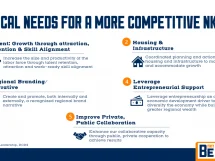Lexington, Ky. – In Kentucky, a woman who holds a full-time job is paid, on average, $33,704 per year while a man who holds a full-time job is paid $42,203 per year, according to an analysis of just-released Census Data conducted by the National Partnership for Women and Families.
This figure means that women in Kentucky are paid 80 cents for every dollar paid to men, amounting to a yearly wage gap of $8,499 between men and women who work full time in the state.
According to the National Partnership’s analysis, Kentucky women who are employed full time, on average, lose a combined total of nearly $5 billion every year due to the wage gap. The organization says that these lost wages “mean families have less money to spend on goods and services that help drive economic growth.”
See the full report on Kentucky’s wage gap analysis.
Nationally, women are paid 79 cents for every dollar paid to men, amounting to a yearly gap in wages of $10,762. Louisiana had the largest wage gap between men and women, at 35 cents per dollar. Washington D.C. had the lowest gap, at 10 cents. Kentucky’s 20 cent gap was ranked 28th (a higher rank means a higher wage gap).
“This study confirms that a punishing wage gap persists for women in every corner of the country and the costs for women, their families and our national and state economies are significant,” said Debra L. Ness, president of the National Partnership for Women & Families. “That women in their states are losing tens of thousands of dollars in critical income each year should be enough to compel lawmakers to act, but too many have failed to do so, especially at the national level. America’s women and families – and our nation – cannot afford to wait any longer for the fair and family friendly measures that would help.”
The National Partnership’s analysis of the wage gap uses data from the U.S. Census Bureau and spans all 50 states and the District of Columbia. The findings for each state, along with state rankings, are available at NationalPartnership.org/Gap.




















Add Comment